The Sanctuary Debate 2022
First published in Sanctuary Asia,
Vol. 42
No. 8,
August 2022
Do YOU Believe That Environmentalists Have Become Merchants of Dystopia and Doom?
Join us for the premier of The Sanctuary Debate and make up your own mind after listening…
Speakers AGAINST The Motion
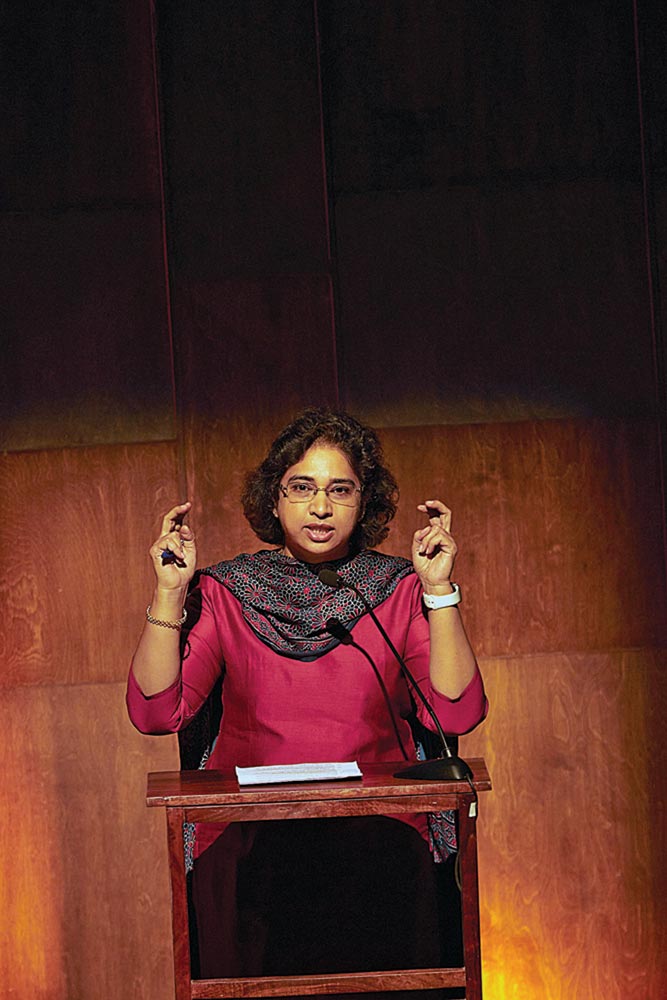
Aarti Khosla “This is not dystopia; this is reality. And that is the problem, that the reality that we have today is much worse than dystopia. Environmentalists are doctors, academics, researchers, they are politicians. Some are even CEOs. In the end, anyone who places clean air, clean water and good life at the heart of decision making is essentially an environmentalist.”
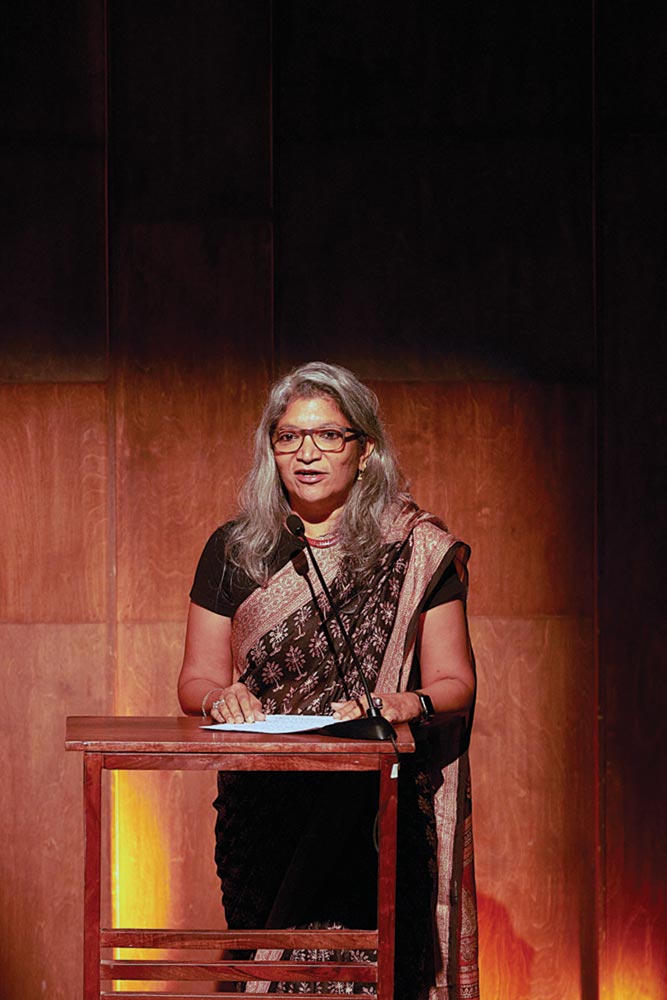
Meenakshi Menon “The planet is not at risk, the people are at risk. There are enough documented cases, including Chernobyl, where we have seen that [if we] leave the planet alone, it can heal itself. But people are not like that; people are not going to be able to survive. Environmentalists suggest holding up a mirror. The picture you see is not pleasant.”
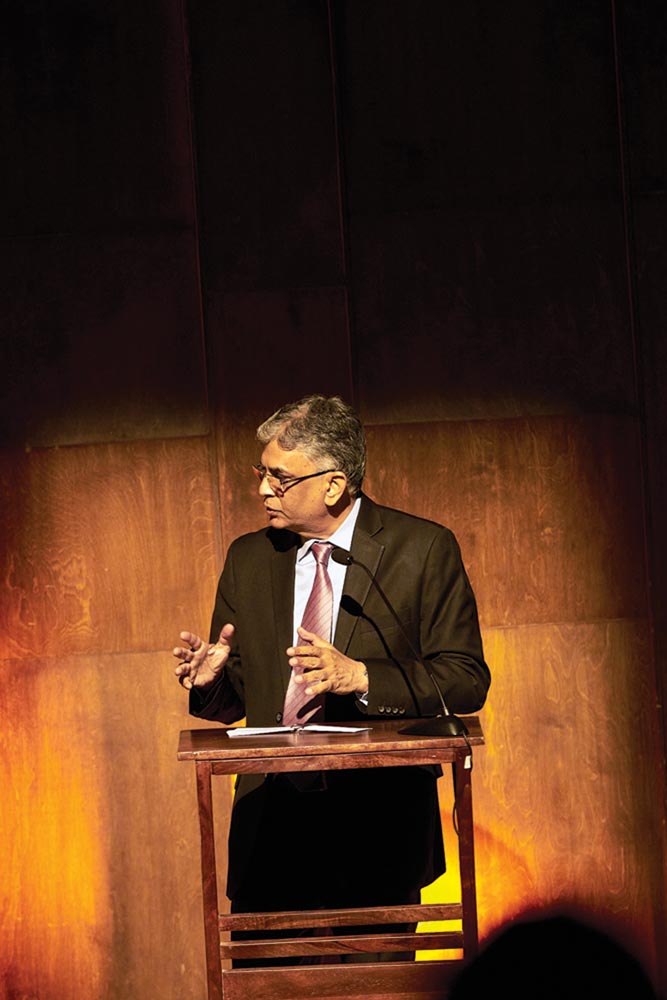
Praveen Gupta “There is no dystopia. There is science, there is anticipation, and there is a resolve to fix whatever we might be headed towards otherwise. There are new types of risks, evolving risks, and there are a range of possibilities; the choices are very much in front of us, the crisis is staring us in our faces, and the choices have to be made now.”
Speakers FOR The Motion

Rohit Bansal “It’s about being part of the solution, to look beyond the binary, to see exactly how the environmental movement can go back to Sundarlal Bhauguna, to Chandi Prakash Bhatt, to our own leaders who have in the past fought for the needs of the country... rather than flagbearing people, who ‘hold the mirror’ but probably also hold an agenda which they sometimes don’t understand adequately.”
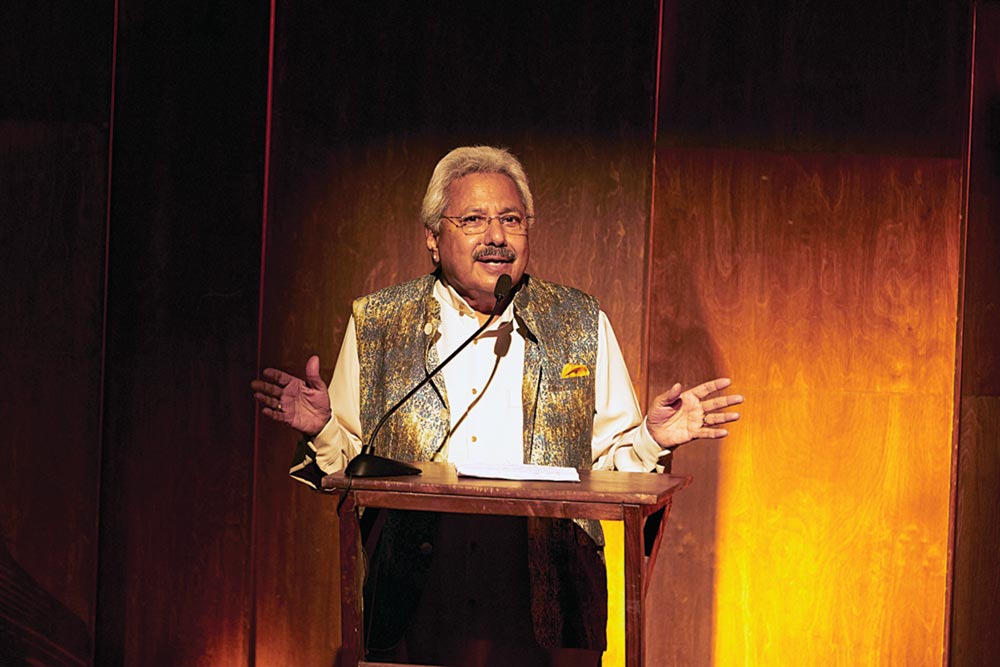
Sunil Alagh “In India we have around eight hundred or nine hundred million people who are poor. Telling them about the environment will have no meaning at all, as they talk about economic growth for themselves. How do you strike a balance between economic growth and social justice? Rather than just raising the problem, it’s about time you came up with solutions.”

Ram Divedi “Ninety-two per cent of debates talk only about the impact of human-made carbon emissions on climate change. Climate change is a big problem for sure. However, why does the world media, why do all the environmentalists only talk about that? It’s because it’s a commodity market and you can create a carbon credit.”
Chair
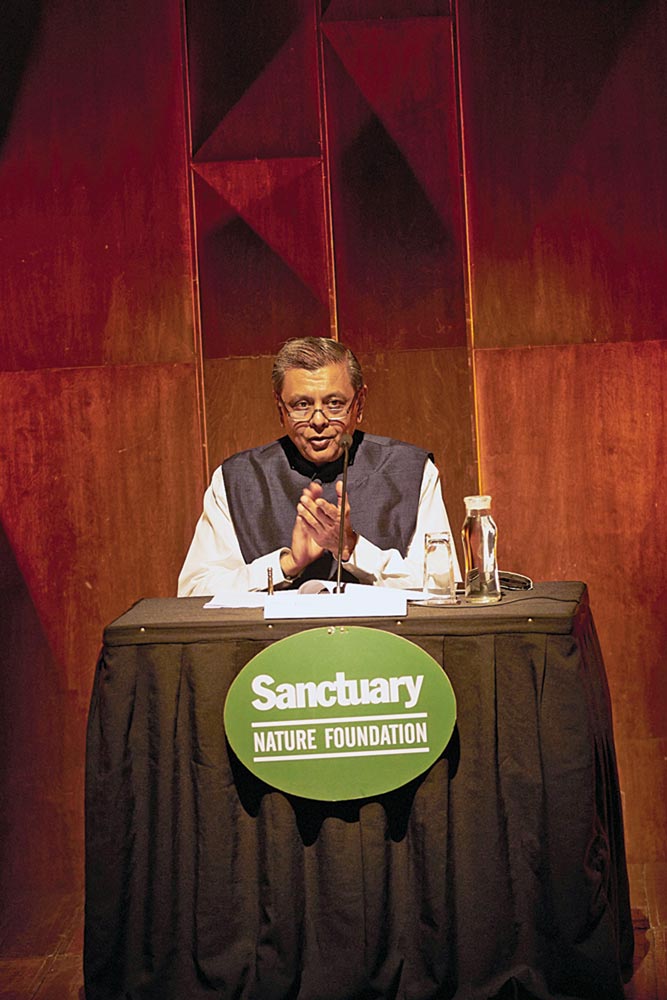
Justice Gautam Sirish Patel “This [proposition] is a question that is evidently alive in many walks of life, in the minds of many leaders, policymakers and worried parents.”
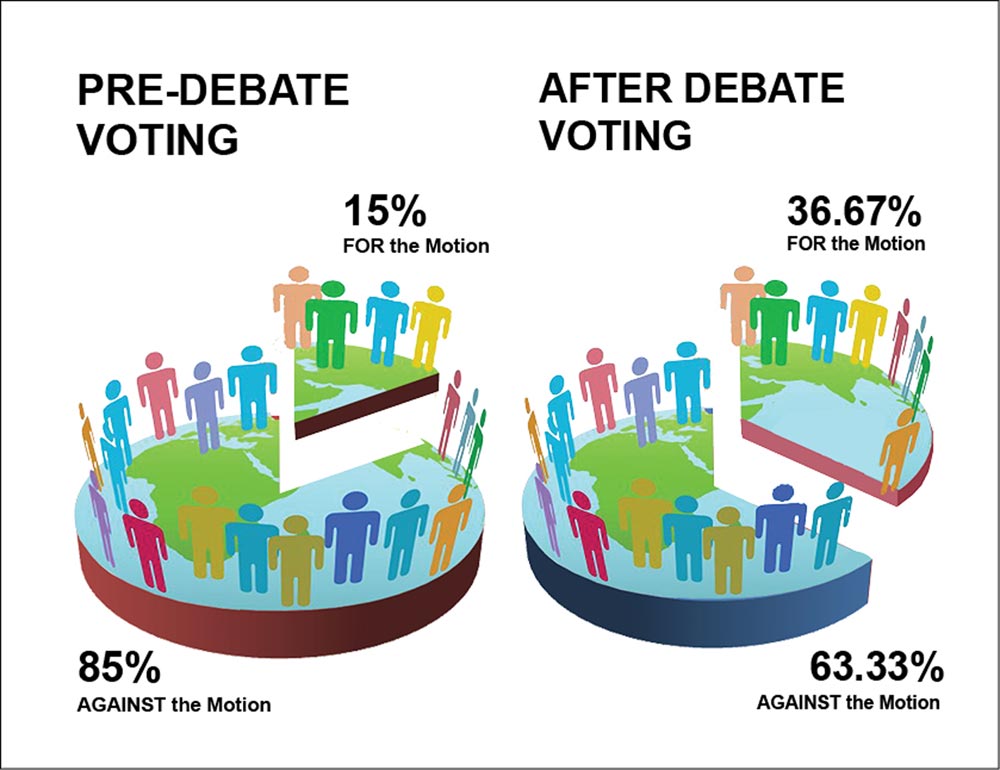
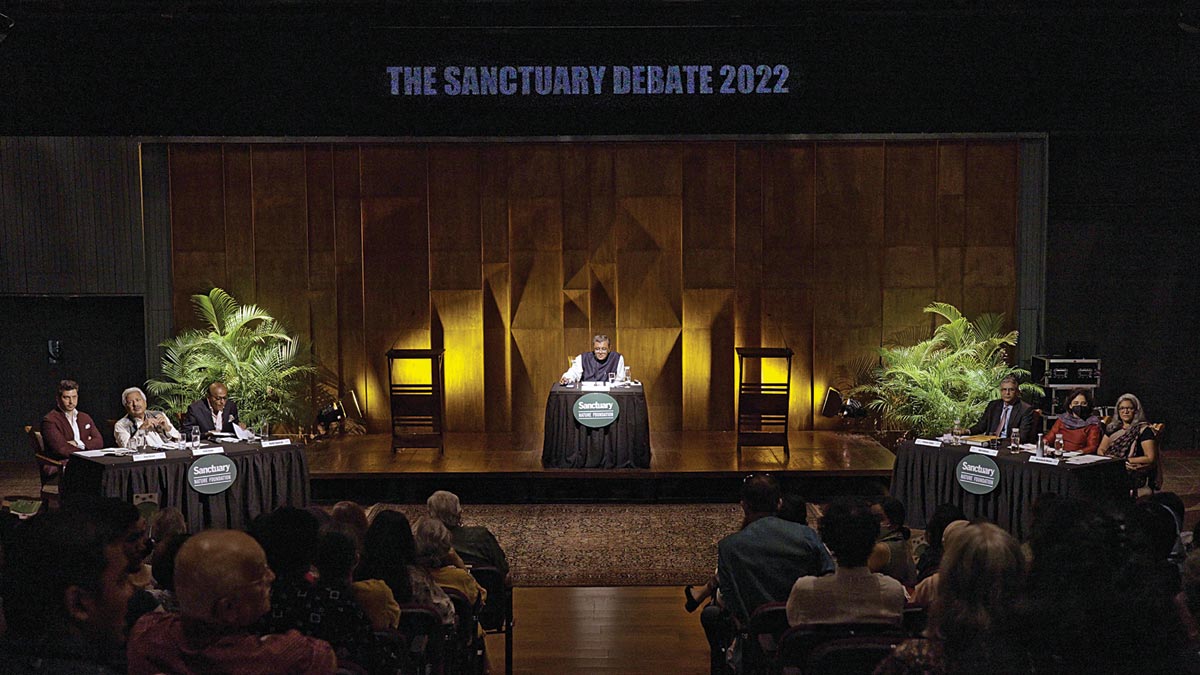
The Sanctuary Debate 2022 was held on June 18, 2022 at the NCPA’s iconic Experimental Theatre in Mumbai. Since 2017, the Sanctuary Nature Foundation has been organising an Oxford Union-style debate, between some of the most credible and erudite speakers, all focused on the cross-section between economics, biodiversity, climate change and health. This year’s debate, in the backdrop of a heatwave in India that saw temperatures reach 45°C in April 2022, against the 42°C-mark of April 2021, in Lucknow, Uttar Pradesh, was a reminder that climate action is now a life or death matter. Photo: Sanctuary Photolibrary.
Dystopia In Real Time
George Orwell’s ‘1984’ was as iconic an example of dystopian fiction as anyone could ever hope to read. Inspired by Orwell’s position that “If liberty means anything at all it means the right to tell people what they do not want to hear,” Praveen Gupta and Bittu Sahgal opine that humans have already pushed the living world into sharp decline. Economic totalitarianism, they argue, has created vast inequities, damaged the biosphere, and forced humans into conflict with each other and the biosphere. Evolutionary homeostasis will inexorably repair the damage wreaked by Homo sapiens, say the authors, but whether we humans survive to witness the great revival or become a footnote in evolutionary history remains to be seen.
Justice Gautam Patel, Mumbai High Court, took charge as Chair of the House for The Sanctuary Debate 2022 held on Saturday, June 18, 2022 and read out the speakers’ rules, before reading out the stark proposition for the benefit of the six speakers and the audience.
“This House Believes That Environmentalists Have Become Merchants Of Dystopia And Doom.”
The Orwellian prediction of a world out of control played on our minds just minutes earlier, as the motley audience trooped into NCPA’s iconic Experimental Theatre, in Mumbai. We wondered how the evening would unfold, as a quiet hush settled in the theatre and the predominantly young audience took their seats in the darkened hall. Some of us had been working to usher reason, humility and common sense into the developmental agenda of world leaders for decades. It was inconceivable to us that anyone could possibly support the proposition, given the global scale, frequency and intensity of the killer floods, fires, cyclones, droughts and disease – once the stuff of dystopian fiction, which today dominates social media, television screens, United Nations agencies, the boardrooms of the largest global corporations, and virtually every government in the world.
At the start of the event, a quick pre-debate poll conducted by Justice Patel saw a mere nine out of the 60 members of the audience voting for the proposition. The rest voted against. But that was the very purpose of the Sanctuary Debate, loosely styled after the iconic Oxford Union Debates… to encourage people who disagreed to express themselves freely, without being disagreeable. Sanctuary Asia readers are encouraged to view The Sanctuary Debate 2022 on YouTube to make up their own minds and to know the final result. What follows below represents the worldviews and the concerns of the authors, one of whom was a speaker against the proposition, and the other, the Editor of Sanctuary Asia for over four decades.
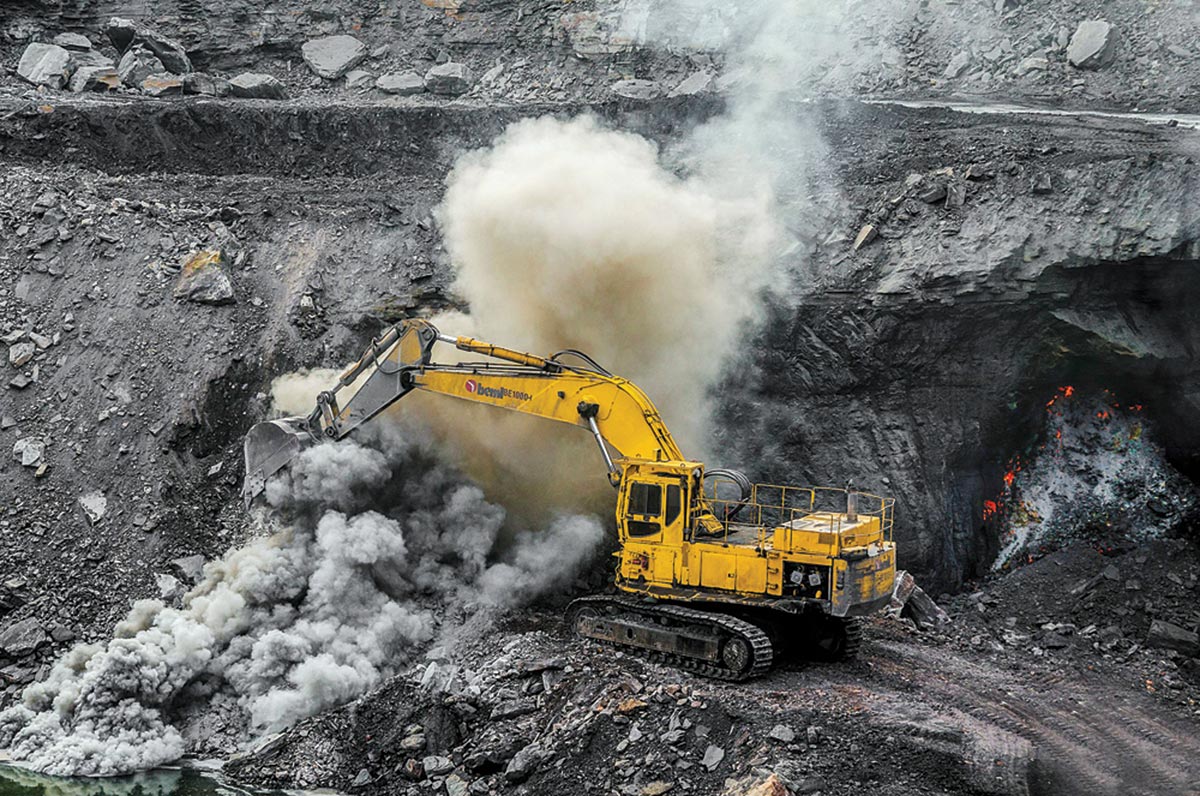
The Jharia coal mine in Jharkhand, one of India’s biggest coal reserves. India is the second largest coal producer and consumer in the world and the third largest global CO2 emitter. The authors warn that while coal is being projected as an economic imperative, the carbon aggravation of our climate crisis is going to cause the Indian economy to spiral downwards, faster than economists of today hope. Photo: Public Domain/Wikimedia.
Yesterday’s Dystopia Today’s Reality?
One of the key documents that has driven the global community closer to accepting the reality of the serious threat that humans currently face from decades of planet mismanagement is The Dasgupta Review on the Economics of Biodiversity, which draws a direct link between the lethal COVID-19 pandemic, the global wildlife trade and the destruction of ecosystems. Professor Partha Dasgupta, in fact, warns that as bad as things are now, we are likely to see worse: “We are destroying biodiversity, the very characteristic that until recently enabled the natural world to flourish so abundantly. If we continue this damage, whole ecosystems will collapse. That is now a real risk.”
This is precisely what the unimpeachable Intergovernmental Science-Policy Platform on Biodiversity and Ecosystem Services (IPBES) also states: “Most of nature’s contributions to people are not fully replaceable, and some are irreplaceable.”
And, over a decade earlier, The Stern Review, authored by Lord Nicholas Stern, which was responsible for shifting the climate discussion away from the relatively narrow confines of science into the realm of economics, stated unequivocally that: “Deforestation was responsible for more emissions than the transport sector and that climate change was the greatest and widest-ranging market failure ever seen.”
And yet, misguided notions of development and economics continue to push Homo sapiens, towards the unenviable possibility that we could wind up as proverbial canaries in a thousand coal mines, fated to become evolutionary mirages on a geologic time scale.
Inexplicably, a sizzling Indian summer has coal atop its menu list. Projected as an economic imperative, the carbon aggravation of our climate crisis is going to cause the Indian economy to spiral downwards, faster than economists of today hope. The deadly summer heatwave in the Indian subcontinent made global headlines, and now Europe follows suit. This is not a one-off incident. Climate ecologist Bill McKibben, author of The End of Nature, and co-founder of 350.org, warns that with 400,000 Hiroshima-atom-bombs-equivalent heat being injected daily into the planet by humans, we have already severely wounded our biosphere.
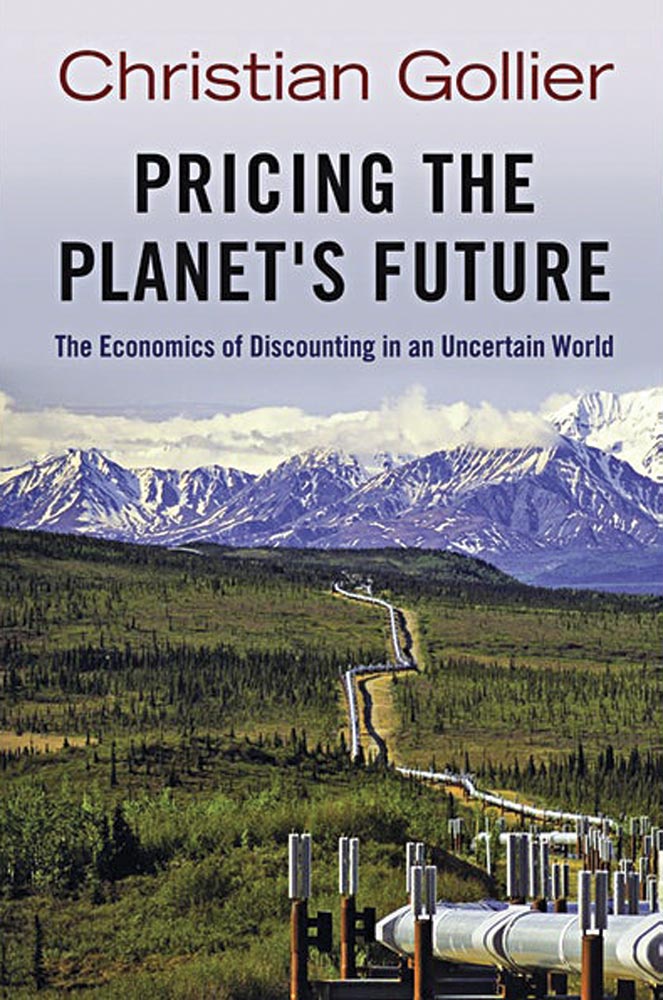
Thus, the fires raging in the Arctic, Alberta, California, Australia, the Amazon and India. Added to this is the merciless, rapid-fire deforestation across the globe. The list of absurdities seems endless. We are witnessing a meltdown at the three poles, ocean acidification and warming, with toxic pollutants – including endocrine-disrupting chemicals – poisoning our land, water and air. The annihilation of our biodiversity is matched by plastics that have permeated every last corner of every imaginable ecosystem, including our own bodies. And then we have the COVID-19 pandemic, with more pandemics lying in wait. As the list of genies we unleash upon ourselves multiplies exponentially, the over 10,000 years of a stable environment that enabled humans to flourish and socially evolve could soon be history.
Had such predictions been made even two decades ago, they would have been labelled fiction! That they are today’s reality should be reason enough for the world to wake up. But economists, politicians and policymakers, largely living out the last years of their influence, want to keep kicking the can further down the road. Like the cigarette industry, the communication strategy of the carbon lobby was once denial, then doubt, and has now shifted to delay. Meanwhile, business as usual causes natural ecosystems – oceans, sandbanks, corals, sandy, muddy and rocky coasts, mangroves, wetlands, grasslands, forests, rivers, lakes, even arid deserts – to be extirpated, or degraded to the point where they are unable to deliver the ecological services humans take for granted.
Not surprisingly, such policy paralysis has compounded and accelerated even the most dire predictions. Mariam Zachariah, a climate scientist with the Grantham Institute, U.K., warns that the extreme temperatures being witnessed across the planet, that used to be once-in-50-year events, have become once-in-four year events!
We have undoubtedly been brought to this dangerous pass because of past colonial exploitation and because, post World War II, the industrial north usurped much of Earth’s available carbon budget. That said, irrespective of whose fault it was, it is everyone’s disaster today. It is disingenuous therefore for India’s power lobby to justify the continued ecological destruction of the Indian subcontinent ‘to alleviate poverty’. Global climate justice is a real and present issue, but that cannot become a lever for policy makers to bypass climate justice within our own boundaries. Put simply, India cannot hope to survive the climate emergency upon us by uprooting ancient forests, displacing local communities and declaring war on biodiversity. Our irrational hurtle towards a coal-induced Armageddon has begun to embrace us to the point of asphyxiation.
There are better, safer ways for us to secure the lives of our people.
Too Hot For Comfort
All nations are reliant on a range of services based on natural ecosystems. Biodiversity and Ecosystem Services (BES) include such necessities as food, water, health, social and economic security. But all these imperatives are reliant on climate stability that we seem unable to prioritise effectively enough.
“Over half (55 per cent) of global GDP, amounting to USD 41.7 trillion, is dependent on high-functioning biodiversity and ecosystem services. However, a staggering fifth of all nations (20 per cent) are at risk of their ecosystems collapsing on account of a decline in biodiversity and related beneficial services”, reveals a study by Swiss Re Institute, a global leader that provides reinsurance, insurance and sundry insurance-based risk transfers. India currently stands third on this list after South Africa and Australia, but looks likely to break some heat and humidity barriers way ahead of others.
A McKinsey study red flags the fact that India could become one of the first places in the world to experience heat waves that cross the survivability limit for a healthy human being resting in the shade within the next decade. Moreover, rising heat and humidity levels will impact labour productivity and economic growth in an economy that relies substantially on outdoor work. Lost labour hours due to extreme heat could put approximately 2.5-4.5 per cent of GDP at risk by 2030, equivalent to roughly $150-250 billion.
Few policy makers fully understand such heat impact implications. The hottest air temperatures ever recorded have been from places like Saudi Arabia, the Sahara Desert, and Death Valley, California. But little attention has been paid to the fact that north India has historically exhibited some of the world’s hottest wet-bulb temperatures, which combine air temperature and relative humidity to provide a more accurate measure of heat stress on the human body than air temperature alone. Scientific literature suggests that a 350C wet-bulb temperature is probably the heat-stress limit for human survival. At such a temperature, a healthy human resting in the shade would probably die within five to six hours. The impact of such high temperatures on other species has not even begun to be studied in any significant way in India.
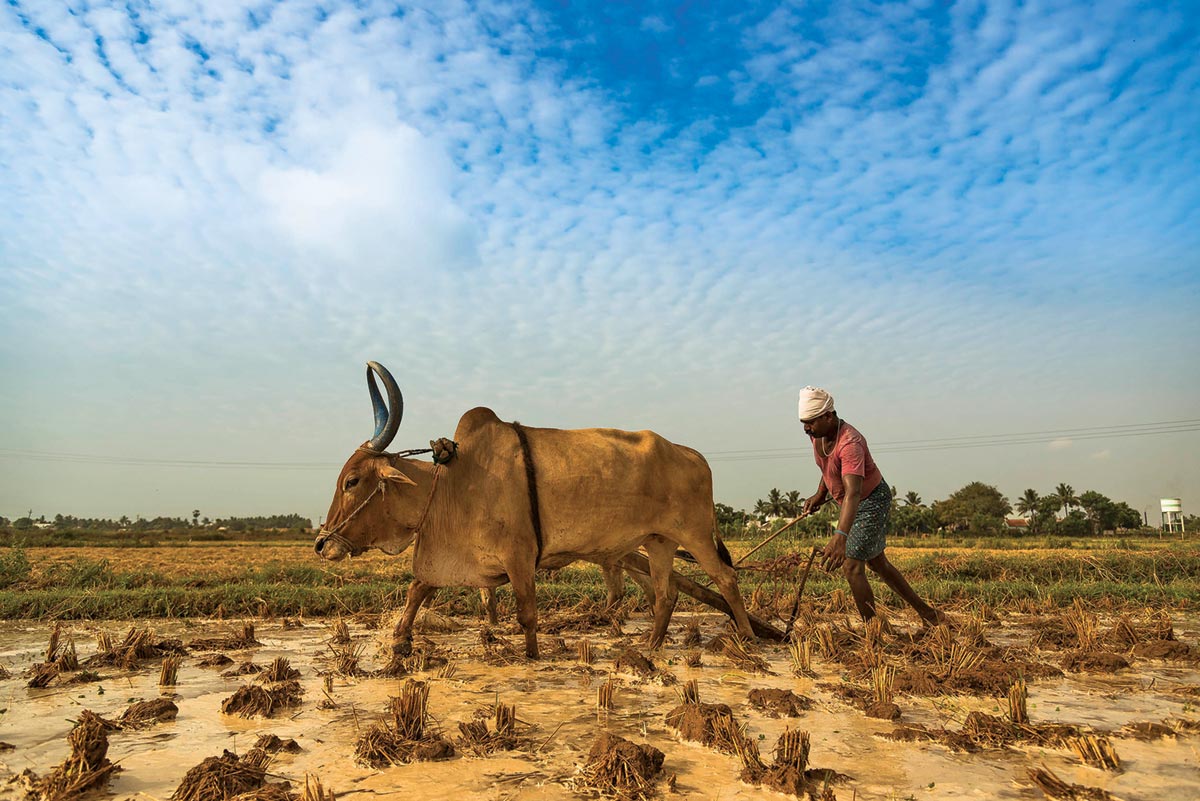
A farmer labours under the hot midday sun. The climate crisis threatens the stability of our food systems and thus our survival. A richer genetic diversity of foods, like we had in the past, would arm our crops with much greater resilience to higher temperatures and changing rainfall patterns. Photo: Public domain/Kannan.
Currently, wet-bulb temperatures during the worst heat waves in India have rarely exceeded 320C. But the climatological analysis conducted for the McKinsey case study indicates that temperatures during the most severe heat waves in the hottest parts of India could begin to breach 340C wet-bulb as early as 2030. Such elevated temperatures have been recorded only a couple of times on Earth, including a 34.60C wet-bulb measurement on the coast of the Persian Gulf in July 2015, and later, a 35.40C wet-bulb measurement taken in the same region. Exposure to such high wet-bulb temperatures will certainly increase mortality risks for the sick and elderly, but when amplified by the urban heat-island effect, for example, on account of the preponderance of concrete and the rapid decrease of green open spaces, urban and semi-urban centre temperatures could cross the 350C survivability threshold even for healthy adults.
By 2050, portions of northern India too could begin to experience heat waves that cross the 35-degree wet-bulb survivability level, with a once-in-a-decade probability (centred on 2050 approaching 80 per cent) according to the McKinsey study.
Dr. Chirag Dhara, a quantum physicist turned climate scientist, underscores the fact that heat has become a major threat: “The Indo-Gangetic belt and the Sundarbans will be among the most affected parts of the country since multiple climate change impacts are playing out in those regions. The Indo-Gangetic plains are hot and humid. Humid heat is much more dangerous than dry heat, and a simultaneous spike in ‘humid heat waves’ there can significantly raise the risk of cardiovascular and neurological conditions.”
It’s a hugely credible fear. A Lancet report confirms a 50 per cent increase in heat-related deaths among people older than 65, with 296,000 deaths in 2018! Most of those deaths were in Japan, China, India, and parts of Europe. Add the complex interplay of forces triggered by heat – sea level rise, falling groundwater levels and the increased frequency and severity of cyclones in the Arabian Sea, and we end up brewing a perfect storm for ourselves.
In our search for solutions, clean energy development jumps to mind, but this is only one part of the equation. Reducing and eventually phasing out fossil fuels is as much an economic challenge as a technical one. If all fossil fuels were to magically disappear today, many countries would not just lose a main source of energy, but a big slice of their revenues too – a problem that becomes particularly acute for coal-dependent developing nations such as India.
India’s Coal Addiction
India is the third largest global CO2 emitter, and currently depends on coal for 70 per cent of its energy needs, a sector that directly or indirectly supports 3.6 million workers.
The Intergovernmental Panel on Climate Change (IPCC) scientists suggest that for a chance to keep the world under the 1.50C threshold, all unabated coal – plants that are not equipped with carbon trapping technologies – must go. Currently, India has about 211GW of operational coal capacity, and another 55GW under various phases of construction. None of these plants possess, or have budgeted for, carbon capture and storage (CCS), an early stage, last resort, expensive and water-intensive technology that the IPCC mentions as a potential mitigation option when all else fails.
For India, suggests Balasubramanian Viswanathan, a policy adviser with the International Institute for Sustainable Development (IISD), the take-home message from the new IPCC report is unequivocal. “It is no longer enough to only have high ambition for clean energy.” He also raises an alarm about India’s National Thermal Power Corporation’s plan to add 9.5GW of coal-fired power plant capacity, when coal’s high cost when compared to renewable energy threatens to cause investors to lose something like U.S. $19 billion in stranded asset risks.
All this at the cost of biodiversity. All this to ‘boost’ the economy that carbon lobbies are effectively scuttling!
And yet, as George Darrah of Systemique Capital eloquently puts it: “Nature is the world’s most valuable asset class. Without nature, we have no oxygen to breathe, no freshwater to drink, no food to eat, and limited removal of carbon dioxide from the atmosphere. The scale and reliability of the services that nature provides are underpinned by biodiversity – the diversity of the plants, fungi, animals and other organisms that combine in a web of near infinite interactions. Protecting and restoring biodiversity is therefore critical to the continued viability of Earth for complex life, and the future of humanity.”
The Nuclear Option?
Author Amitav Ghosh, respected across the globe for his gripping, carefully-researched books, sensibly dismisses nuclear power as an option in The Great Derangement: “With climate change, many nuclear plants around the world are now threatened by rising seas. During massive storms, essential cooling systems could fail; safety systems could be damaged; contaminants could seep into the plant and radioactive water could leak out, as happened at the Fukushima Daiichi plant.”
In a landmark judgement that created shockwaves around the world recently, four Tokyo Electric Power Holdings executives were ordered by a Japanese Court to pay a staggering US $97 billion for negligently failing to prevent the nuclear meltdown. It is unlikely that the individuals will ever be able to pay this amount, but the court succeeded in sending a powerful message to all the ‘it was not my fault’ executives in responsible positions. It is impossible for nuclear power supporters to counter such empirical facts. One shudders to contemplate what the fate of Mumbai might be with two nuclear facilities within its urban limits, with the Arabian Sea witnessing ever stronger and ever more frequent storms, sea surges and cyclones.
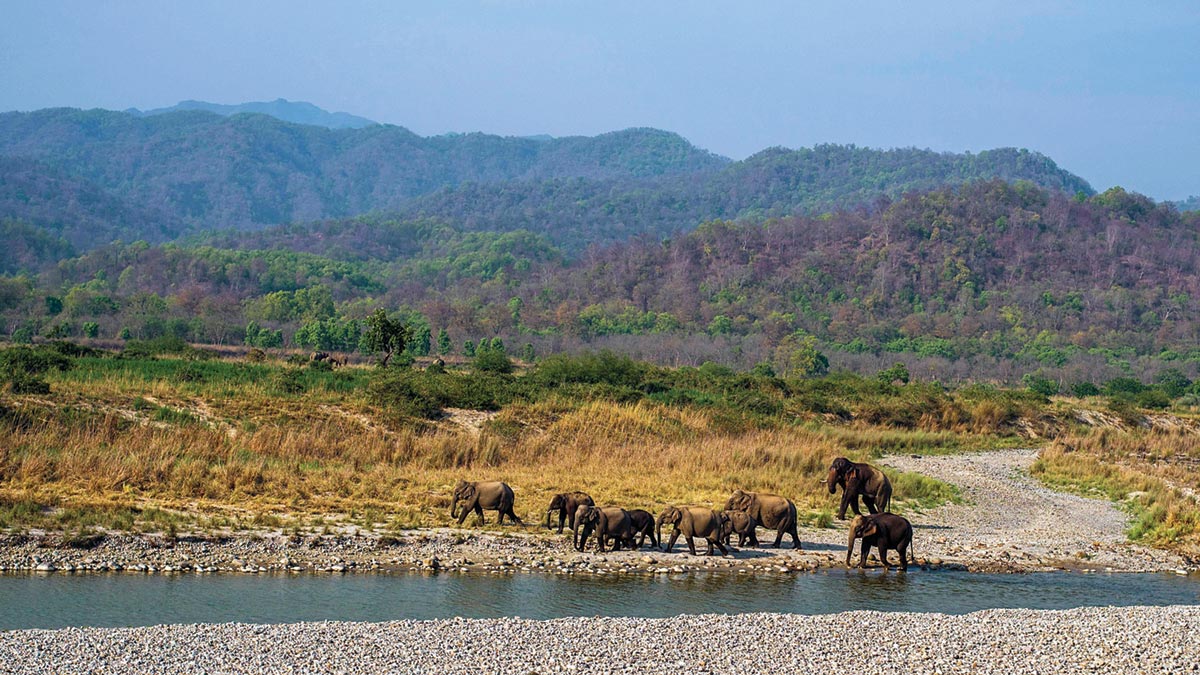
A herd of elephants crossing the Ramganga river in the Corbett National Park. Humans are directly responsible for driving extinction rates of all wild species up to hundreds, even thousands, of times higher than the natural baseline rate. Photo: Arpan Saha.
Uninsurable Risks?
Little wonder that all too few private insurance companies in the world are prepared to offer unfettered comprehensive insurance for nuclear reactors, particularly the most dangerous fissile portions. The State (that’s you as the taxpayer!) therefore becomes the insurer of last resort, for what is at core a commercially unviable, uninsurable risk.
Biodiversity losses too will soon prove to be an increasingly important source of risk (and opportunity) for the insurance sector. The significant degradation of ecosystems has the potential to materially impact global finance, economies, and societies alike. Understanding the physical and transition risks associated with biodiversity loss and working to mitigate the damage to biodiversity will be key to meeting the articulated targets set by the Paris Agreement.
Apart from environmentalists, the insurance sector too is increasingly becoming involved with issues surrounding the risks of biodiversity losses. This is a new but rising reality for underwriters, investors, and for virtually all corporate citizens. Insurers will, for instance, be impacted by changes in climate and biodiversity and by low carbon economy transition risks, which will magnify the impact and cost of the normal risks they insure against, investments they make and projects for which they assume responsibility. As with climate-related risk, the concept of double materiality (that takes into account not just climate change impact on the balance sheet of an insurer but also impact of an insurer on the environment) has now become a huge factor. The writing is on the wall. Biodiversity risk is destined to be a key factor for insurance companies that will be forced to hire experts to take stock of negative biodiversity impacts, both for their investments and their underwriting choices.
The risks to biodiversity have only recently begun gaining serious attention from economists, planners and big business. But as the planet spins towards wildly unpredictable climate destabilisation, much hope is placed on the Post-2020 Global Biodiversity Framework to be agreed upon at the Biodiversity COP (Conference of Parties), scheduled to be held in Montreal between December 5-17, 2022. Should any resulting global agreements specify key targets that can inform regulatory practices, the insurance sector will have a great opportunity to develop a market for nature-based insurance. In the absence of globally agreed targets, however, efforts to develop nature-based insurance will continue to be driven by those few key investors with clear vested interests, or by large corporations within the context of enhanced disclosure requirements.
Indian investors in the mega Life Insurance Corporation of India (LIC) IPO need to ask themselves what they actually want… higher insurance penetration, or larger investments in fossil fuels? After all, LIC already has big stakes in Coal India and National Thermal Power Corporation of India (NTPC). And those sectors are clearly witnessing a long term value slide.
But the stakes for humanity are far greater than the next quarter profits of corporations, or victory at the next election for politicians. Think of new pandemics! A simulation by Colin Carlson and Greg Albery of Georgetown University revealed that mammalian viruses have already been dramatically reshuffled, to a degree that likely can’t be undone, even if all carbon emissions were to cease tomorrow. The Anthropocene, an era defined by humanity’s power over Earth, is also an era defined by the power of viruses over us – a Pandemicene, if you will. “The moment to stop climate change from increasing viral transmission was 15 years ago,” Carlson said. “We’re in a world that’s 1.2 degrees warmer (than pre-industrial levels), and there is no backpedalling. We have to prepare for more pandemics because of it.”
It’s gotten worse. Our food systems too are wholly unprepared for the climate emergency. In fact, we could be eating ourselves to extinction, according to author Dan Saladino, who warns darkly that we should be worried about the extinction of our once-diverse food sources, not just the extinction of wild species.
And Why Should This Matter?
Because a richer genetic diversity of foods, like we had in the past, would arm our crops with much greater resilience to higher temperatures and changing rainfall patterns. Like an investor with stocks, savings and real estate, diversity in the field spreads the risk: so if an early season drought wipes out one crop, there will be others that mature later, or might be naturally more drought tolerant, so farmers aren’t left with nothing. The bottom line? As Sanctuary has long underscored: “The Economy is a Wholly-owned Subsidiary of the Biosphere.”
One way or the other, corporations need to seriously consider how their operations impact and are impacted by biodiversity loss, because the legal risks of not doing so are rising by the day. According to Wynne Lawrence and Zaneta Sedilekova of Clyde & Co., “Corporates and their officers will need to take a proactive approach to managing the looming material risk of biodiversity loss, incoming regulation and liability risks. Compared with climate risk, the timeline here is accelerated.”
Vandana Shiva, nuclear physicist, food sovereignty advocate and ecofeminist, sums up the misguided direction in which powerful forces are leading humanity by stating a bland truth: “Ultimately, environmentally destructive behaviour is the result of a failure to recognise that human beings are an inseparable part of nature and that we cannot damage it without severely damaging ourselves.”
In Conclusion
Ignoring the considered views of scientists, conservationists and even economists whose lives have been devoted to unearthing the reality of Earth’s climate emergency, would be akin to rejecting the advice of a doctor who advises that alcohol be avoided to prevent a patient from dying of liver cirrhosis.
That is more or less comparable to the dire warning put out by marine biologist and former Scottish Government adviser Dr. Howard Dryden: “Given that plankton is the life-support system for the planet and humanity cannot survive without it, the result (of the findings of the Global Oceanic Environmental Survey Foundation) is disturbing…. It (plankton) will be gone in around 25 years. Our results confirmed a nine per cent reduction in primary productivity in the Atlantic. Effectively, the Atlantic Ocean is now pretty much dead.” He goes on (correctly) to pin the cause of our climate emergency on the destruction of nature.
It is our considered view that the Indian subcontinent is becoming increasingly unmanageable, partly because of the climate crisis we created for ourselves, and because of seriously flawed land management decisions being taken, which instead of tackling the problem are exacerbating our crisis. We no longer have decades to begin solving our problems. Like clockwork, with every passing year the cost of food is going to rise, as will the availability of water. Ditto for our rising health problems, including the pandemics in waiting. As we write, we are reminded that virtually all parts of Europe are aflame and that Britain has declared a ‘Heat Emergency’ with London, Manchester, and York flirting with temperatures higher than 400C!
It’s a global catastrophe and few national leaders have revealed either the will, or the ability to bring their nation back on balance. Not because we have no solutions, but because politicians and businessmen have no stomach for solutions that involve working to restore nature, with humility and common sense.
Which brings us neatly back to the The Sanctuary Debate proposition:
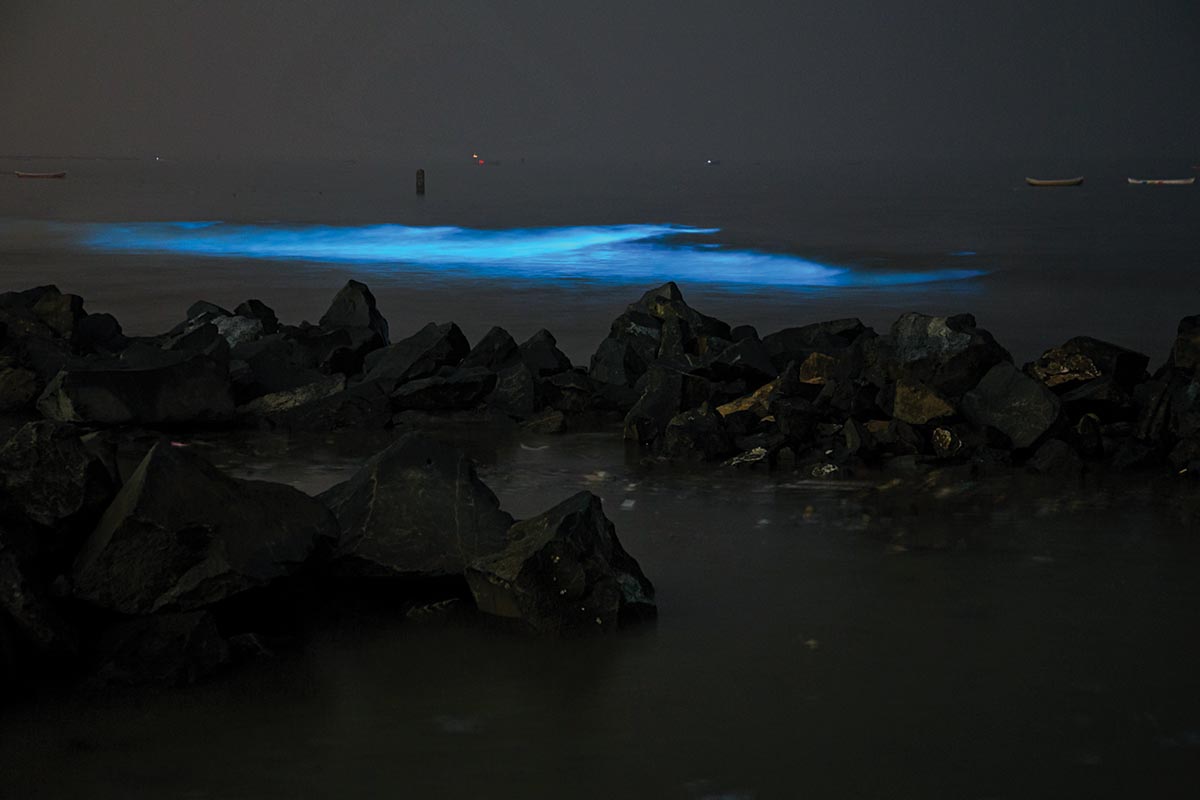
Bioluminescent plankton along Mumbai’s coast. The life-support system for the planet, humanity cannot survive without plankton. Scientists from the Global Oceanic Environmental Survey have found that at the current rate and with continued abuse of our biosphere, planktonic life could potentially die out in around 25 years. Photo: Saurabh Sawant.
“This House Believes That Environmentalists Have Become Merchants Of Dystopia And Doom.”
Clearly, the authors write from a transparent perspective that places them against the above proposition. And, to the credit of the debating skills of speakers for the proposition, they did succeed in raising audience support from 15 to around 36 per cent. Nevertheless, the proposition was overwhelmingly defeated.
Post the debate, Justice Patel, our Chair, and members of both teams agreed with the Sanctuary Nature Foundation’s raison d’etre for using ordered debate as a way to bring issues to light and to arrive at sensible conclusions. As French moralist, Joseph Joubert, so elegantly put it:
“It Is Better To Debate A Question Without Settling It Than To Settle A Question Without Debating It.”
Editor’s Note: Readers are invited to express their views on this article and on the proposition by writing to Sanctuary Asia at editorial@sanctuaryasia.com. The best communications (under 30 words) will be published in the October 2022 issue of Sanctuary Asia.















